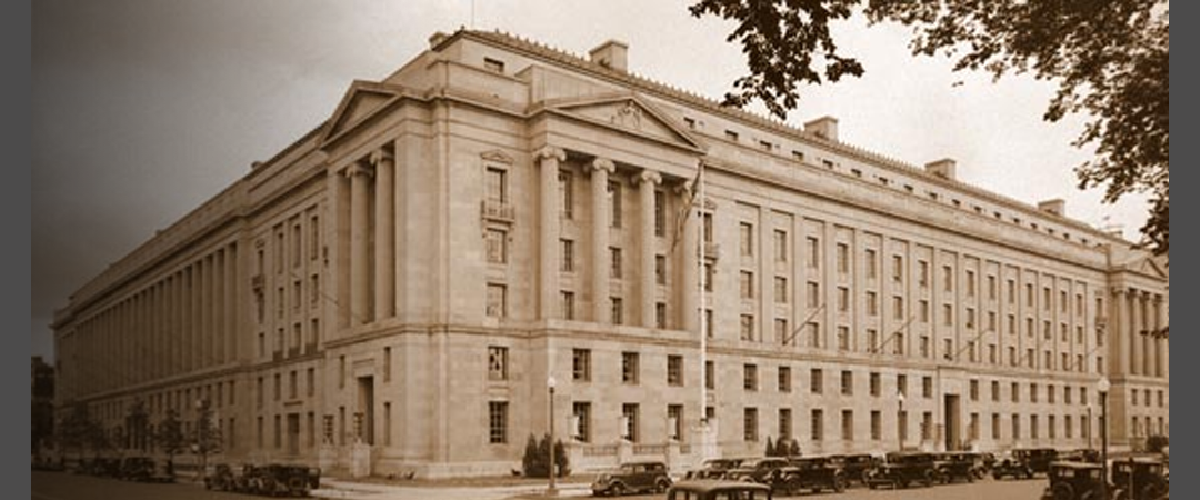Ballot Question #5 — The Orphans’ Court and the Trojan Horse

If you are like most Maryland voters, you will pick up your ballot this year and towards the end of the local offices section you’ll see a category and say to yourself, “Oh yes, the Orphans’ Court — I meant to look that up.”
Don’t feel bad. You are far from alone. This quiet little court has been around since Maryland was a colony, with roots that go back centuries before that. And it remains the court with which more Marylanders will have dealings at some point in their lives than any other part of our state’s judicial system.
But it is apolitical, it generally has no public issues, and so it quietly goes about its work, far from headlines or social media attention. You will not come to, or submit papers to, the Orphans’ Court because you are accused of a crime, are filing suit or being sued, or even because you have a serious traffic ticket. You will come to get help with settling the affairs of someone dear to you, at one of the most difficult times of your life. And when your time comes, the Orphans’ Court is the court that will stand for you when you are no longer here to fight your own battles.
Let’s start with the name. It’s a tad misleading but makes sense when you know from whence it came. In the Middle Ages, children were “orphans” when their father died, because their mothers, being mere females, had no legal rights and were, themselves, property. In those times, family matters were handled by the ecclesiastical courts — the church. This included management and preservation of inheritances belonging to children. Eventually, the City of London established a secular Court of Orphans to take over those functions.
This concept migrated to the Maryland colony. During the Revolution, probate (administration of estates) was delegated to the County Courts, and then to the Orphans’ Court and Register of Wills for each county and Baltimore City. The system remains in place today.
So what does the Orphans’ Court do today? Property rights are so fundamental that the responsibilities have not changed much since the first recorded London case in 1276. When you die and the fruits of your life’s work are to be distributed, who will oversee this? The Orphans’ Court will. If you have a Will, the Orphans’ Court will enforce it. If you don’t have a Will, the Orphans’ Court will protect the rights of your heirs. It will also protect the rights of your creditors and oversee the legal fees and Personal Representative commissions.
If your heirs are feuding (even the nicest folks sometimes do over inheritance), the Orphans’ Court will help them sort it out. Often the tension arises from some event or perceived transgression having little or nothing to do with the inheritance. In those cases, the informality of the Orphans’ Court allows people to unburden themselves and feel heard. It often helps the parties arrive at mutual agreement, rather than having the court impose a judgement. If funds or property are left to a minor, they will be safeguarded until the child comes of age. An appointed guardian may petition the court for funds if needed for the benefit of the child in the meantime.
This is your court, the people’s court. You have the privilege of choosing the judges yourself from among your own community, then hiring and firing them every four years.
Now the Orphans’ Court’s existence is threatened. Ballot Question #5 is a referendum for a constitutional amendment that would require the Circuit Court of Howard County to sit as the Orphans’ Court, and would repeal the election of the Orphans’ Court judges. This question is not the local issue it appears to be — it is a Trojan Horse, cleverly designed to deprive Maryland citizens of a fast, inexpensive, and personal way to settle their loved ones’ estates, and to reduce their voting rights. It did not arise from the people of Howard County, and the Circuit Court, already overburdened statewide, was not consulted. The information provided by the proponents is almost entirely inaccurate; most is outright false.
What are they saying about the orphans’ court? The referendum sponsor has been attacking what she has multiple times referred to as a “lay court” (referring to Howard County’s Orphans’ Court) because she believes all judges should be attorneys, an opinion she has expressed in task force work sessions and in multiple recorded testimonies. Howard County’s court, for two of the last three terms, has been an attorney court by a two-to-one majority. This attack on the capability of lay courts has not been limited to Howard County.
The sponsor alleges that only 15 U.S. states have specialized probate courts. The senator who introduced this bill in the Senate hearing said that Maryland’s 19 lay judge Orphans’ Courts were the ONLY ones in the United States. The instigator of this attempt to abolish the Orphans’ Court has testified that only Maryland and Pennsylvania still have this “antiquated” system.
The truth is that only Maryland and Pennsylvania have something called the orphans’ court, but every state has a probate court, either stand-alone or merged into another court. At least six states have lay judges in some or all of their probate courts. Georgia alone has 132 counties where lay judges may serve on the probate court. Twenty-seven states — a majority of states — have lay judges serving in various specialty courts, including those handling criminal matters.
Lay judges have served in specialized jurisdictional courts under English law since the 14th Century. Lay judges typically display a strong knowledge in their particular area of the law, common sense, knowledge of their community, and experience. In Maryland’s rural counties, lay judges are the best choice for part-time courts, since attorneys would have to give up their practices for these positions where pay rates start at $1,600 per year. If the Circuit Court has to absorb the work, the need for an additional judge will cost the state six figures, not counting staff and office space, equipment, and operating expenses. Meanwhile, if any party prefers to take their case to the Circuit Court, there is a provision in the statutes for doing just that by transmitting issues.
The part-time nature of the Orphans’ Courts has been another area of attack on false premises. The sponsor and witnesses allege that Howard County’s approximately 250 cases per year would add less than 2% to the workload of the Circuit Court. To make this argument they have chosen the number of hearings, which is not synonymous with cases. A great deal of the work of the Orphans’ Courts is administrative, meaning the court reviews files and accounts, grants or rejects motions, and otherwise monitors the progress of the estate and provides court orders when needed for administrative purposes.
In Howard County, as in most of Maryland, the Orphans’ Court meets only once a week unless there are urgent matters in between. But they still handle approximately 2,000 cases per year. The allegation put forth that they do not meet weekly and therefore cause delays that would be avoidable in the Circuit Court is entirely false.
The referendum sponsor and her witnesses have accused the court in Howard County of unnecessary delays because unanimity of opinion is required for a ruling. That is not true. Two judges in agreement can rule, and have done so.
Another allegation is that the court’s failure to understand the law caused two families unnecessary and burdensome delays in resolving their loved one’s estates. These two cases had to do with an attorney claiming fees before performing any work. The Orphans’ Court denied the payments, and appeals of that ruling were filed during the pandemic, when courts were closed. Had the attorney been willing to do the work before being paid, the estate would have been settled long before the appeal was decided.
Another egregious allegation is that the Howard County Orphans’ Court is “the worst in the state,” said on social media by the official who has pushed this referendum, although no specifics could be provided. This same person told the legislature that Howard County had the worst appeal record of all but one other Orphans’ Court in Maryland. The truth is that of approximately 10,000 or more individual orders signed by that court in the last 12 years, only 45 have been appealed. That is pretty impressive. This is typical of all of Maryland’s Orphans’ Courts — the appeals are rare, and most of those are settled or dismissed before being heard. The appeal in many cases is merely a mechanism to provide time for legal maneuvers.
The proponents of this proposed constitutional amendment promise that the Circuit Court would be:
- more efficient — it wouldn’t, it takes far longer to get on a Circuit Court docket;
- more reliable — no, most current Circuit Court judges have no background in basic probate; and
- more compassionate — no, the informality of the Orphans’ Court is specifically designed to permit families to work out their differences, even engage in something akin to mediation, in a more relaxed, friendlier environment than the Circuit Court.
This referendum was pushed through the legislature as a local bill to take advantage of legislative courtesy. Since most proposed amendments are unknown to the voters until they reach the polls, the proponents are counting on general ignorance of the truth to get this approved. The sponsor said, in her videotaped testimony before the House Judiciary Committee, “Today I am coming with the Howard County local bill. I think that what the state does in terms of Orphans’ Courts is a later issue that we should take up.” (House Judiciary Committee open hearing, March 2nd, 2022, 1 hour, 47 minutes, and 50 seconds into the tape.)
This proposed amendment is a Trojan Horse, designed to further personal agendas of a very few people at the expense of the citizens of Maryland. Please reject it. Vote AGAINST Ballot Question #5.
Melissa Pollitt Bright is the Chief Judge of the Wicomico County Orphans’ Court; the President of the Maryland Association of Orphans’ Court Judges (MAJOC); and the Past Chair of the Education Sub-Committee, Conference of Orphans’ Court Judges. She can be reached at truthabouttheorphanscourt@gmail.com.
Common Sense for the Eastern Shore







